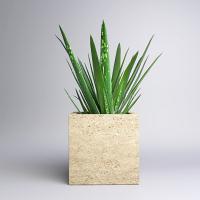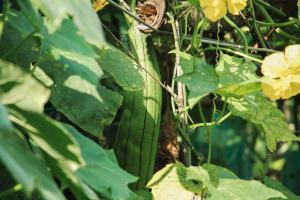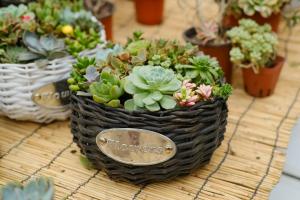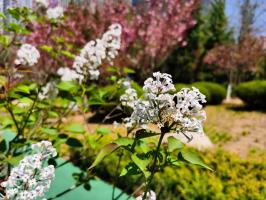Introduction
Coral reefs are unique ecosystems found in the shallow, clear waters of tropical oceans around the world, providing habitats for an incredible array of marine life. However, it is not just fish, sea turtles, and other marine creatures that call these reefs home. Coral reefs are also home to a variety of plants – water plants to be precise.
What Are Coral Reef Plants?
Coral reef plants are plants that are adapted to living in the unique environment of coral reefs. These plants play a vital role in the ecosystem by providing food, shelter, and habitat for a variety of marine life. While some species of plants grow directly on the coral itself, others grow in the surrounding waters or in the sand at the bottom of the reef.
The Different Types of Coral Reef Plants
There are many different types of plants that can be found on coral reefs, with each playing a different role in the ecosystem. Some of the most common types of coral reef plants include:
Seagrasses: These are flowering plants that grow in shallow, sandy areas of the reef. They are an important food source for many species of marine life, including sea turtles and dugongs.
Macroalgae: These are large, multicellular algae that can grow on the reef itself or in the surrounding waters. They provide food and shelter for many species of fish and invertebrates.
Coraline algae: These are a type of red algae that grow as a crust on the reef. They help to cement the reef together, providing a solid structure for other organisms to grow on.
Why Are Coral Reef Plants Important?
While coral reef plants may seem insignificant compared to the colorful fish and other marine creatures that call the reef home, they play a vital role in the health and stability of the ecosystem. Without these plants, the reef would not be able to support the diverse array of life that it does.
Seagrasses, for example, are not only an important food source for many marine animals, but also help to stabilize the seafloor, preventing erosion and keeping sediment in place. Macroalgae provide hiding places and shelter for many species of fish and invertebrates, while coraline algae help to build and maintain the reef structure itself.
The Threats Facing Coral Reef Plants
Coral reef plants, like the rest of the coral reef ecosystem, face a number of threats. Climate change, including rising temperatures and ocean acidification, pose a significant threat to the health and survival of coral reefs and the plants that live on them. Pollution, overfishing, and destructive fishing practices also take a toll on these delicate ecosystems.
In addition, human activities such as development and coastal construction can also impact the health and stability of coral reef plants. Coastal development can lead to increased sedimentation and nutrient runoff, which can harm seagrasses and other plants. Physical damage to the reef topography, such as from boats and other watercraft, can also have a negative impact on the health of the ecosystem.
The Importance of Protecting Coral Reef Plants
Given the vital role that coral reef plants play in the health and stability of the reef ecosystem, it is more important than ever to take steps to protect these delicate plants. This means taking action to reduce greenhouse gas emissions and slow the effects of climate change, as well as addressing other threats such as pollution and overfishing.
Protecting coral reef plants is not just important for the plants themselves, but for the entire marine ecosystem. By protecting these plants, we are helping to ensure the continued health and vitality of one of the most important and biodiverse ecosystems on the planet.
Conclusion
Coral reef plants may not be as flashy or colorful as some of the other inhabitants of the reef, but they play a vital role in the ecosystem. From seagrasses to macroalgae to coraline algae, each of these plants has a unique and important role to play. Protecting these plants is not just important for their own sake, but for the health and stability of the entire coral reef ecosystem.

 how many times do yo...
how many times do yo... how many planted tre...
how many planted tre... how many pine trees ...
how many pine trees ... how many pecan trees...
how many pecan trees... how many plants comp...
how many plants comp... how many plants can ...
how many plants can ... how many plants and ...
how many plants and ... how many pepper plan...
how many pepper plan...
































